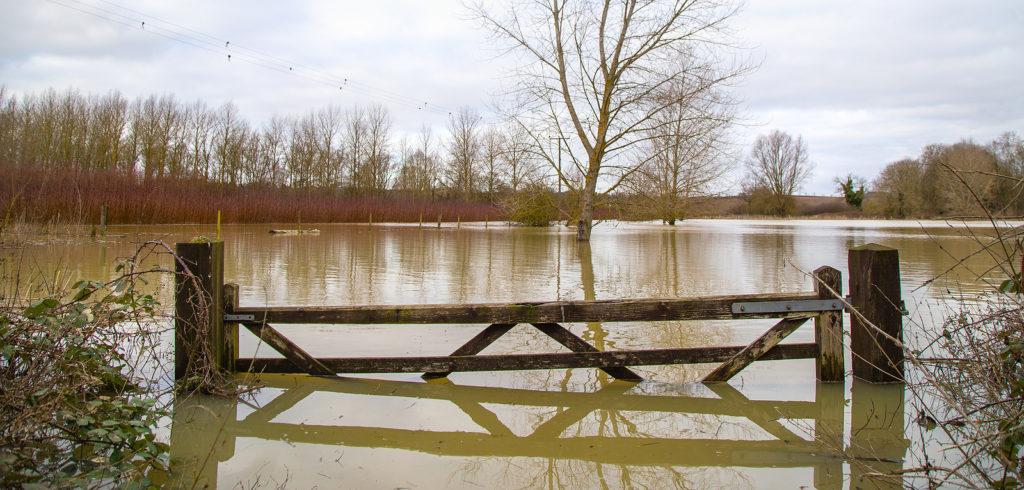Blog
MANAGING A FLOODED WELL
By Guest Author - Water Systems Council
If you live in an area that was recently flooded, your private well may be in danger of contamination from pollutants carried by flood water or at risk of shock from water-logged well equipment.
As late spring and summer rains occur throughout many areas, we wanted to take this opportunity to share this guest article from our friends at the Water Systems Council, a non-profit focused on the millions of private well and small, shared well owners throughout the United States. If you are a first time well owner, you will also want to check out our recent post Buying a Home with Well Water? Here’s 5 Ways to Maintain it
First Steps for a Flooded Well
Below is a quick overview of advisories that should be followed after a flood:
- Do not drink or wash with your well water. You could get sick from contaminants washed into the well by the flood.
- Do not turn on the well pump. There is a danger of electrical shock and damage to your well or pump if they were flooded.
- Contact your well contractor for help in dealing with the impacts of the flood on your water quality and well system.
Tests for Contamination
You should suspect water contamination any time your well casing becomes flooded, if your well is shallow and you are near areas that have been flooded, if you notice a change in taste or color of your water, or there is sediment in your water.
Flood conditions can allow bacterial, viral, parasite or chemical contamination to enter the top of your well or seep down along your well’s casing. Even if flood water did not rise over the top of your well casing, your neighbor’s well may have been flooded, allowing contamination to migrate underground to your well.
If you suspect your drinking water is contaminated, find an alternative source for drinking, cooking, and washing. You can get water from a neighbor’s well you know is safe, from a community water supply, or you can purchase bottled water. If you can’t find a convenient source of safe water, boil your well water before use. Boil the water vigorously for one minute. If you live in an altitude greater than one mile above sea level, increase boiling time to three minutes. For more information on boiling your water, see the Water Systems Council wellcare® information sheet What You Need to Know if You Are Told to Boil Your Drinking Water.
Before you resume using your well, collect a water sample and have it tested for bacteria by a state certified laboratory. Contact your local or state health department for testing or use the Water Systems Council’s interactive map to locate a state certified laboratory in your area.
Order A Bacterial Test For Your Well Today
If the sample tests positive for coliform bacteria, ask the laboratory to test for E. coli bacteria. The presence of E. coli usually indicates disease-causing bacteria are in your water and it is not safe to drink, cook with, or wash with.
Disinfecting the Well
If tests indicate your well is contaminated with E. coli bacteria, you should have the well and the entire plumbing system disinfected using a shock chlorination process. A licensed well contractor has the equipment, materials, and expertise to eliminate bacteria contamination.
You may do this work yourself if you carefully follow the directions on the Water Systems Council wellcare® information sheet Disinfecting Your Well. Always have your water tested a second time after it is treated with chlorine or any other treatment process.
Check the Well and Pump
After the flood has receded and the pump and electrical system are dry, ask your well contractor to check the well system. The pump may need to be cleaned of silt and sand.
Flood water can carry large debris that can loosen well hardware, dislodge well construction materials, or distort the well casing, particularly on older wells. Coarse sediment and flood water can erode pump and electrical components.
Do not turn on the equipment until the wiring system has been checked by your well contractor or a qualified electrician. If the pump’s control box was flooded, all electrical fittings must be dry before service can be restored. There is a risk of shock and damage to your well and pump if the system is not dry and clean.
Protecting Your Well from Flood
After a flood, ask your well contractor if your well casing should be raised to a height of at least two feet above the regional flood elevation for your location. This is usually the height of the water during a 100-year flood event. You should also contact your local or state regulatory agency to see if your well system is up to current code for your area.
For more information on managing a flooded well, see the Water Systems Council wellcare® information sheet on Emergencies & Disasters and Your Well or contact the wellcare® Hotline at 888-395-1033.
More Information on Managing a Flooded Well
For more information on protecting your wellhead, contact the well contractor who installed your well or locate a licensed well contractor in your area using our interactive map. If you need further assistance, contact the wellcare® Hotline at 888-395-1033.
Disclosures
About Water Systems Council
wellcare® is a program of the Water Systems Council (WSC). WSC is the only national organization solely focused on protecting the health and water supply of more than 13 million households nationwide who depend on private wells.
More About Xperiential Laboratories
Xperiential Laboratories is a member of the Water Systems Council and is proud to support its mission to protect and promote well water systems and their commitment to ensuring that Americans who depend on wells have safe, reliable drinking water
Category: Guest Blogs, Well Water
Share this on:
Latest Blogs
Water Alerts
Have the knowledge to take action.
Water is Precious - Know What's In Yours™. Xperiential offers testing to clients in the residential, professional, commercial, and municipal sectors.




